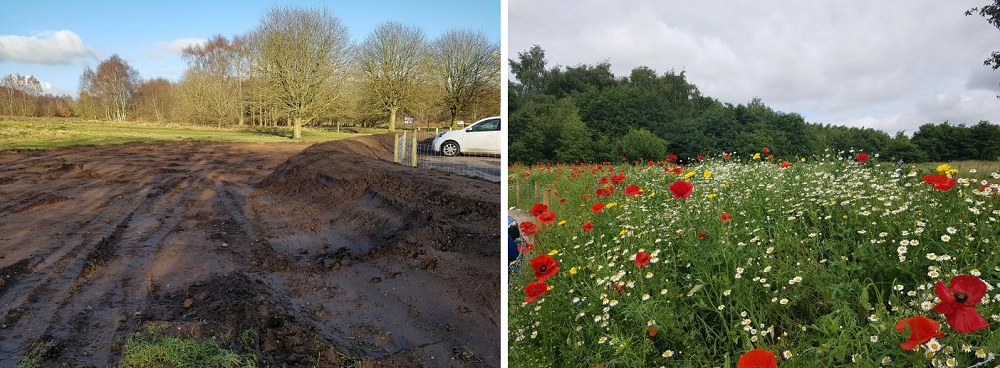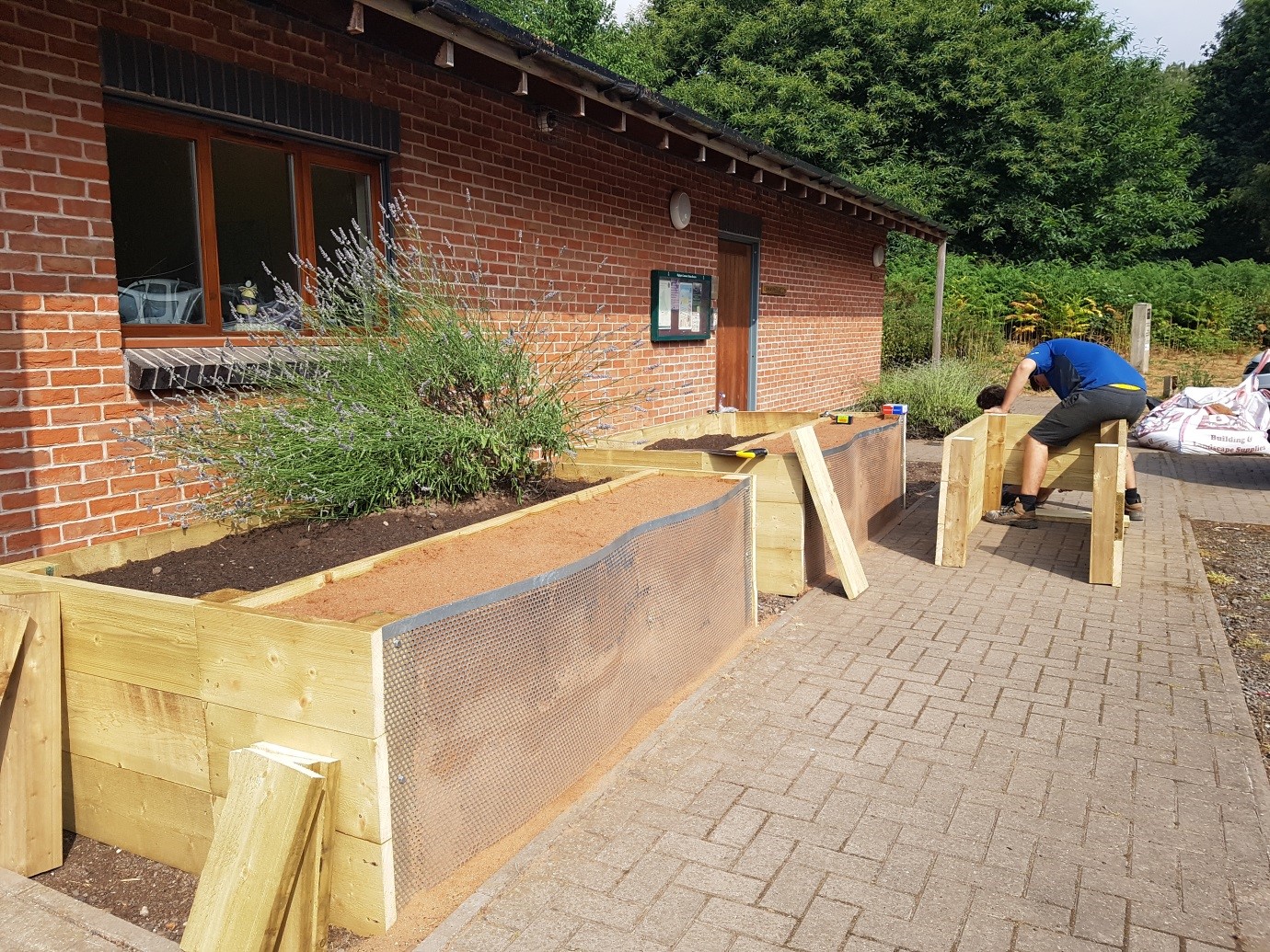
Staffordshire Wildlife Trust was awarded £3,500 from the 2017-18 PEBBLE fund towards its project to create habitat for solitary bees and parasitic wasps at Highgate Common in Enville.
Part one: Bee Beaches and wildflower enhancement
A habitat for bees and wasps
Staffordshire Wildlife Trust used some of the fund to hire a digger to create 0.5 ha of bare earth habitat for the 140 species of bees and wasps populating the Common. The bare earth areas removed the top layer of the soil and disturbed the soil, stripping away the nutrients. This was done in the aim of exposing some of the dormant heather seeds in the soils and promoting the return of heathland species.
Wildflower areas
Vehicle access was damaging the Common and leaving muddy, rutted tracks in the Heathland. Therefore, using the soil that was excavated for the bare earth areas, a bund was created around the carpark. This stopped vehicle access and the bund was planted with a wildflower seed mix that was specifically chosen to benefit nationally rare bee species found on site.
Photos show: Excavated earth from bare earth areas used to create a bund around the car park and wildflowers planted around the car park (photos by kind permission of Staffordshire Wildlife Trust).
Benefits
The benefits of the project are:
Part two: Underspend and delivering additional benefit
Staffordshire Wildlife Trust approached us with news that its contractor had been able to, not only, create additional scrapes for the bare earth areas than anticipated, but was also able to finish earlier than planned.
The contractor kindly agreed to lower the cost for the works completed, meaning that the project had some remaining funds from its Bee Beaches and Wildflower Enhancement Project. The Trust approached us to ask if it could use these funds to further expand the project and deliver additional benefits, and we agreed that the funding could be used.

The extension to this project was to create three flower beds with a false sand wall to be built outside the community building. The sand wall is a perfect habitat for solitary bees and wasps to mine into and, as an added bonus, the adjacent flower beds allow easy access to flowers.
Two students were able to build the flower beds and sand wall as part of their Duke of Edinburgh Gold Award. The flower beds were installed outside the community building and quickly became a talking point amongst visitors to the site, giving staff a wonderful opportunity to explain about mining bees and wasps. The flower beds were being used by solitary wasps within two weeks of being installed.
In July 2019 the rare wasp "Gorytes laticinctus", was spotted on Highgate Common by Staffordshire Wildlife Trust warden, Hayley Dorrington: